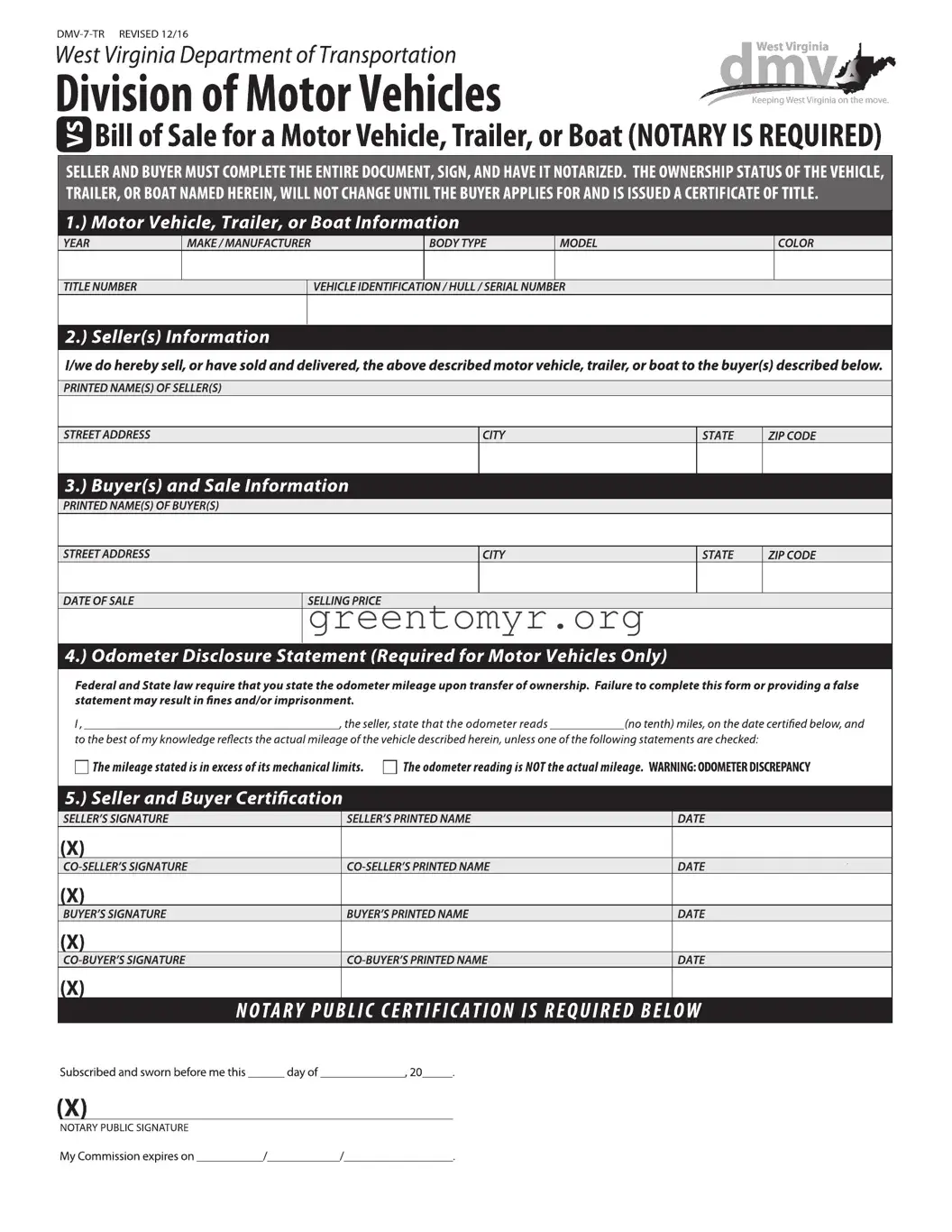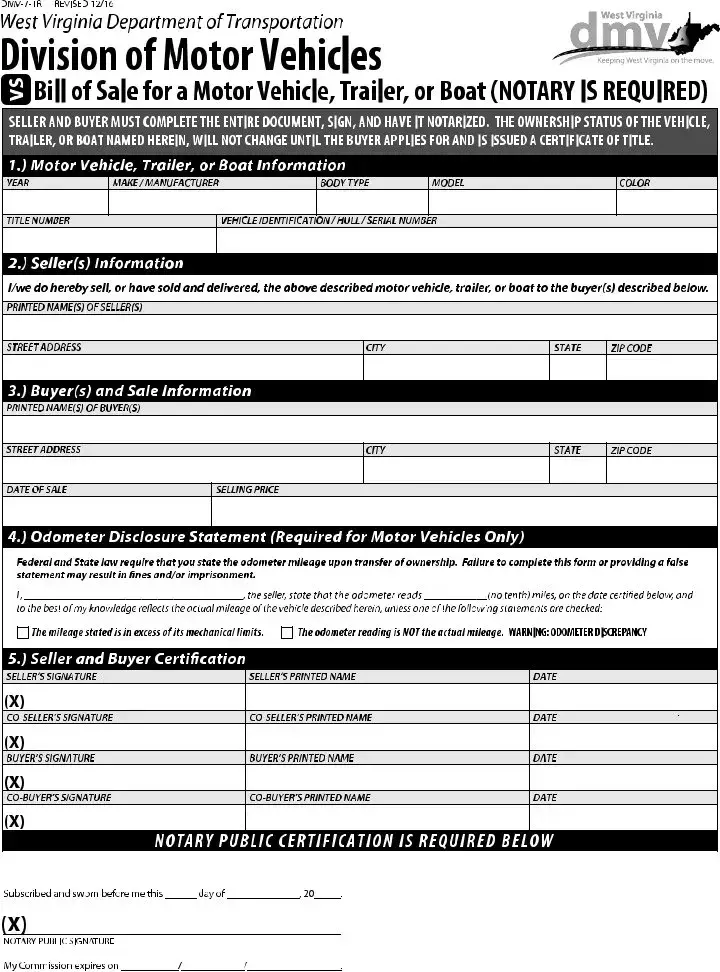The BOS DMV-7-TR form is a critical document that individuals must complete when reporting a vehicle's status, particularly regarding its transfer or junking. However, due to its significance, many people stumble during the completion process. One common mistake is failing to provide accurate vehicle identification information. The form requires specific details, such as the Vehicle Identification Number (VIN), make, model, and year. Omitting any of these details can lead to processing delays and potential legal complications.
Another frequent error involves not signing or dating the form. It might seem trivial, but a signature is necessary to validate the document. In many cases, people overlook the final section of the form, which necessitates their written confirmation. Without this, the DMV cannot process the request, leaving individuals frustrated.
People often neglect to check their mail for confirmation notices after submission. Following up is crucial. The DMV sends out notifications to confirm receipt and any actions taken, but if individuals ignore these communications, they may remain unaware of any issues requiring their attention. Proactive follow-up ensures that the process moves smoothly.
Another point of confusion arises from the submission method. Some individuals mistakenly believe that any means of sending the form is acceptable. In reality, many states require specific submission methods, such as in-person visits or electronic submissions to validate the request. Relying on unofficial channels can lead to rejected forms or lost documents.
Many people also overlook the required supporting documents. When submitting the BOS DMV-7-TR form, additional paperwork may be necessary, such as proof of ownership or identification. These documents serve as evidence to support the claims made in the form, and without them, the application process can experience significant delays.
Completing the form hurriedly is another misstep. Individuals may feel pressured to finish the task quickly, leading to careless errors. Taking time to review each section thoughtfully can prevent misunderstandings. Accurate information is essential, and rushing through the process often results in mistakes that complicate matters later.
Lastly, constant discrepancies arise from not reading the instructions. Each state may have variations in how the form should be filled out. Ignoring these instructions can lead to problems down the line. Carefully reviewing the guidelines provided by the DMV is critical to ensure that the form is completed correctly and avoids unnecessary complications.

